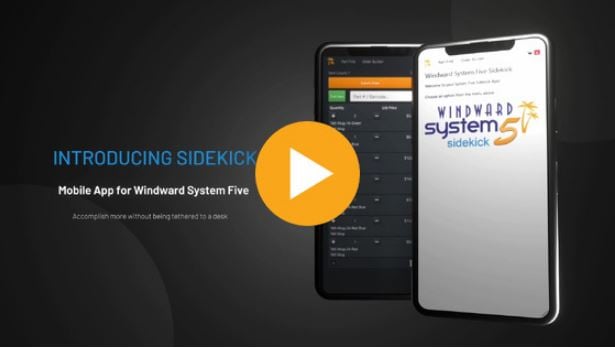WARNING: Please perform inventory integrity with "fix" options before performing a physical count.
- How do you form a plan, and stick to it?
- What sort of strategies do we have available?
- Do you start with a plan or with strategy?
Important: Do an inventory integrity check with fix options for inventory
- This will hopefully clean up any inventory issues that can affect the counting process.
- This will often speed up the processing of the count because it is less likely to have the yellow lines from inventory issues
- This is similar to a fixed quantity process but is not the same. If a fixed quantity deals with the issue, but the inventory integrity did not, I suggest we submit this as an incident so that future count processes will run more smoothly.
Identified physical count methods
- The printout method is where you print your inventory on sheets, count, then data enter the information back into System Five.
- The big count method is where you use laptops & scanners, or you use handheld data collectors to scan your inventory.
- You then perform 2 more steps in order to finish counting the rest or your items
- This count is designed for when the percentage of active inventory parts in stock is small
- The external count method is where you have an outside group count your inventory and provide an excel report with the resulting updated count information.
Uninitialized Count:
The Plan
A plan always comes first, followed by the details of how you get the plan accomplished and the strategies put in play to perform the detailed tasks. An example of a plan can be described this way: “You are going to do a big count where you have all the parts that are scannable scanned via a portable data collector, and then print sheets out for items that you didn't scan. Finally, you will do a report of all items that you missed. You will produce variance reports to account for the changes in inventory value. This whole process will help you to adjust your inventory value account on the general ledger to the correct amount”
Details
The detailed processes of the plan are really how we tie the plan together. You might bring in the data collector files every 30 minutes, or you might have them bring the data collectors in section by section. You might do the handheld data collecting before the printed lists, or you might do it the other way around. You might be open for business or closed for business. These detailed processes can have a great effect on which benefits you face as well as what challenges you face. The detailed processes and how you choose which ones to perform are where strategy comes into play.
Strategy
Strategy comes from understanding the strengths and weaknesses of the methods you are choosing. Trying to put together a solid strategy without knowing and understanding your options can be very difficult. This is where we have the opportunity to provide great value to you, and where you have to bridge the gap of understanding. You need to know the why behind choosing which method to be able to really apply the strategy best for you. The strategy will help make things easier, but it is not required. You have all the resources you need to get the job done. In the end, the basic mechanics for physical counts are available in our documentation.
Putting it all together
So you need a plan and know that there are some detailed processes that you will need to be aware of. We will start first with 2 default strategies that rely on the basic mechanics needed to perform a count. There are 2 choices here: to count with a data collector using the Big Count method; to use the print out method using one big count batch to count your entire inventory. These two starting points are very simple scenarios and have limitations.
Strengths
- Having one part spread out in different sections of the store does not break this process, these methods use one big count batch to count product.
- Doing things all at once prevents duplication and the chance of certain types of detail-oriented mistakes.
- The big count methods described here are simple to follow and have the least number of scenarios you have to be aware of
Limitations
- It doesn't scale well to large inventories: Using the printout method does not make sense for large inventories because it is very natural to break this count out into sections. Breaking out the printout method into sections is a simple strategy but does require you to understand its strengths and weaknesses to avoid pitfalls.
- They don't work well if your business is open. Processes have to be developed to make sure you have a good strategy for doing counts while your business is open.
- This could be described like this: Strategy needs to be considered to allow you to put into place a way to deal with your business being open while doing counts.
- If you mess up a large count, you may have to re-do enter the whole thing instead of re-doing a smaller section
Simple Strategies
There are many different ways you can break out by section. You can sort by category, by location, by supplier, and so on. If we process sections separately there are some effects that you should be aware of.
Strengths
- These logical sections help you break down and make more sense of your counting process
- It is easy to delegate work by assigning a section to someone
- You can print a nice list of items in that section
- It is a simple way to break out your count into manageable sections
Limitations
- There are several requirements that come to light when you examine how you want to do things
- If you count an inventory part, you must count it at all its locations, not just the one.
- The information on your parts must be correct to break them into sections.
- Ex: You must have locations on all your parts to be able to go by location. The same goes for suppliers etc.
- If you are open for business and you count a section you must count it immediately after creating a count batch for that section
- Any delays open up larger windows for errors to occur. Creating a count batch essentially takes a snapshot of that section you are counting. That frozen section in time will degrade as sales are made from it. You don't want to spoil your count by letting customers purchase a bunch of products out of it before you get a chance to count it. If this happens, you might want to throw away the spoiled count batch take a new snapshot, and count the whole thing again.
- If you print a section a second time or print sections that overlap you will create a lot of duplication
- Here is a way you can check to see if items have been counted in the Physical Count procedure. There are other reporting methods outside the physical count process
- There are other requirements that can come up, and each will have to be considered. You will need to research and test to discover the process that will work for you. This is where defining a solid strategy comes in. Please look at the strategy section above for a bit of an explanation of strategy. Please look at the Custom Strategies section below for more of a discussion on custom strategies.
- If you don't follow the requirements that come up based on your customs process or processes, your counts will not be accurate
Side Topics
- Location Filtering issue: The location filter “BF04” (starting location) to “BF04” (ending location) does not include all items that have the location “BF04”
- Break scenario 1: You may have more than one logical location attached to an item ex: Location “BF04, BF05” logically means 2 locations. This is really only 1 location “BF04, BF05”.
- To include locations that have multiple locations that start with “BF04” you need to append a “z” to the end of your search. You would use the location filter “BF04” (starting location) to “BF04z” (ending location) in order to include locations that start with “BF04” and are look like this “BF04, BF05”
- IMPORTANT: The filter “BF04” (starting location) to “BF04z” (ending location) would not find this location: “BF05,BF04”. This is because it only shows items that start with “BF04”. This is good because we would not want to count an item 2 times and double up the count.
Counting with Data Collectors using the "BIG COUNT METHOD"
Custom Strategies
The idea behind this section to try and isolate a specific problem so the information will apply to several businesses.
Locations are not accurate
Items not uniquely barcoded
Location fields have more than one location
We have kits
We have serial numbers
Count these separately, and not part of any other batch.




